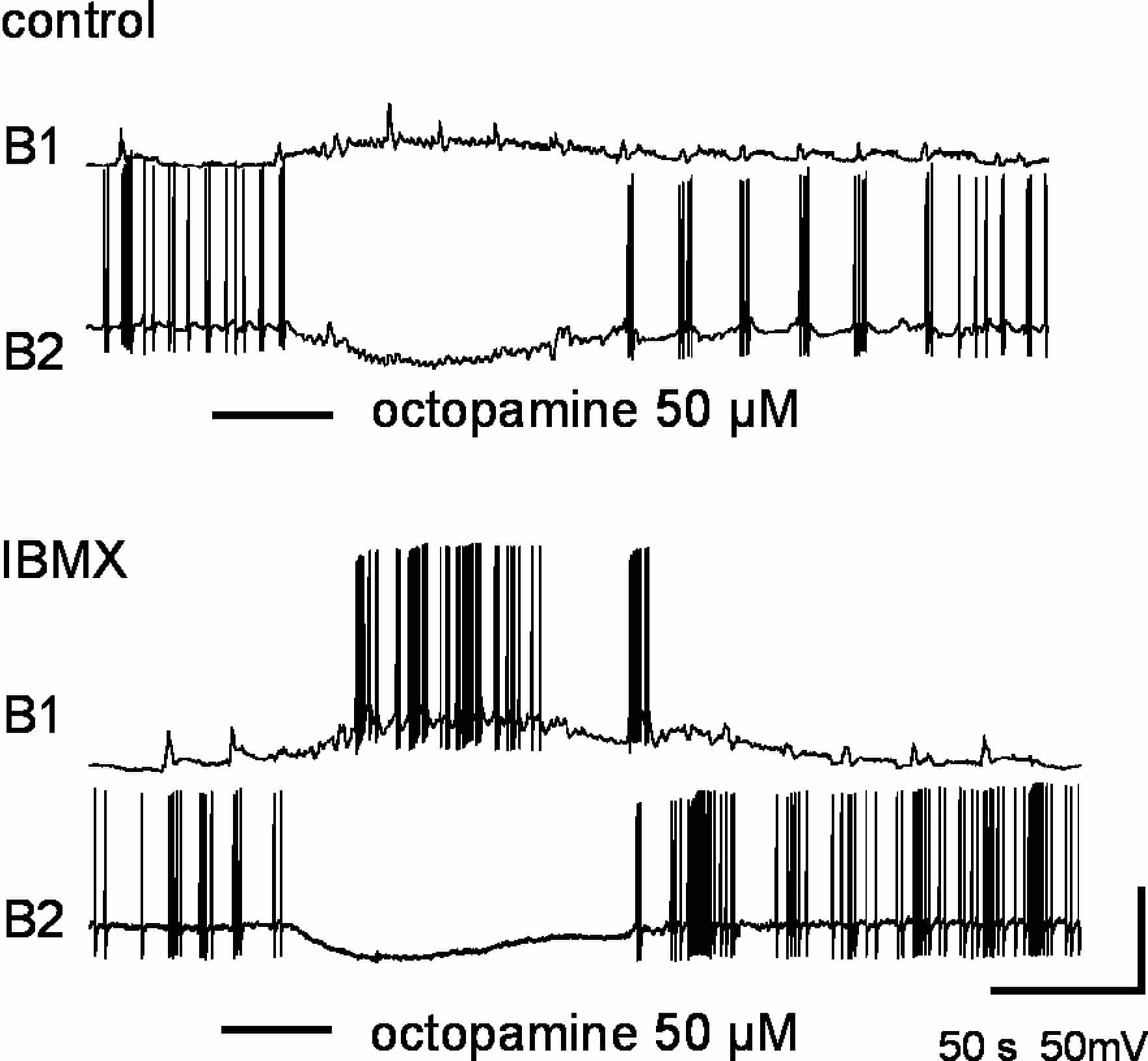We recently showed a major role for octopamine as a transmitter in the buccal ganglia of the snail Lymnaea stagnalis (Vehovszky & Elliott, 2001). Most octopamine responses in insects are mediated by adenylyl cyclase-dependent mechanisms (see, Roeder 1999 for review). To determine if this is also the case in molluscs, we recorded simultaneously the responses in the B1, B2 and B3 motoneurons to bath-applied octopamine in the presence of pharmacological agents which interact with the cAMP pathway.
The CNS was isolated and pinned down in a bath, though which saline was pumped at 1ml/min. Penetration of the visually identified neurons B1, B2 and B3 using glass micropipettes was assisted by application of 0.1 % protease (Sigma XIV). Signals were amplified and recorded to computer disk using DasyLab. Chemicals were dissolved in high Ca/high Mg saline or low Ca/high Mg saline, to reduce synaptically mediated background. Full details of the methods are given Vehovszky & Elliott (2001).
The B1 motoneuron is depolarised by octopamine, with a threshold of 5 µM. The amplitude of the response is enhanced by preincubation for 20 min with 10 µM IBMX (an inhibitor of phosphodiesterase). Application of the direct cyclase activator 50 µM forskolin also depolarises the B1 motoneuron, but the inactive analog 1, 9-dideoxyforskolin has no effect. The membrane-permeable cAMP analog 8-bromo-cAMP also depolarise the B1 motoneuron, at 2 mM. Effects of the cyclase blockers SQ 22536 and Rp-cAMPS were only seen at extremely high concentrations (1-3 mM) – this may indicate that the tissue sheath or glial cells prevent these drugs from reaching the neurons. The response was also blocked by the G-protein Antagonist GDP-β-S. These observations are consistent with the hypothesis that the B1 has an octopamine receptor that activates adenylyl cyclase. The B2 and B3 neurons are hyperpolarised by octopamine – their thresholds are 5 and 0.5 µM respectively. Their responses are not affected by GDP-β-S, IBMX, 8-bromo-cAMP, Rp-cAMPS or SQ 22536. Forskolin has an excitatory effect on the B2 and B3 motoneurons; no inhibition was seen. In fact forskolin excites all the buccal neurons tested so far.
We conclude that the inhibitory octopamine receptor in the B2 and B3 neurons does not use cAMP for signalling, and must use a different pathway.

